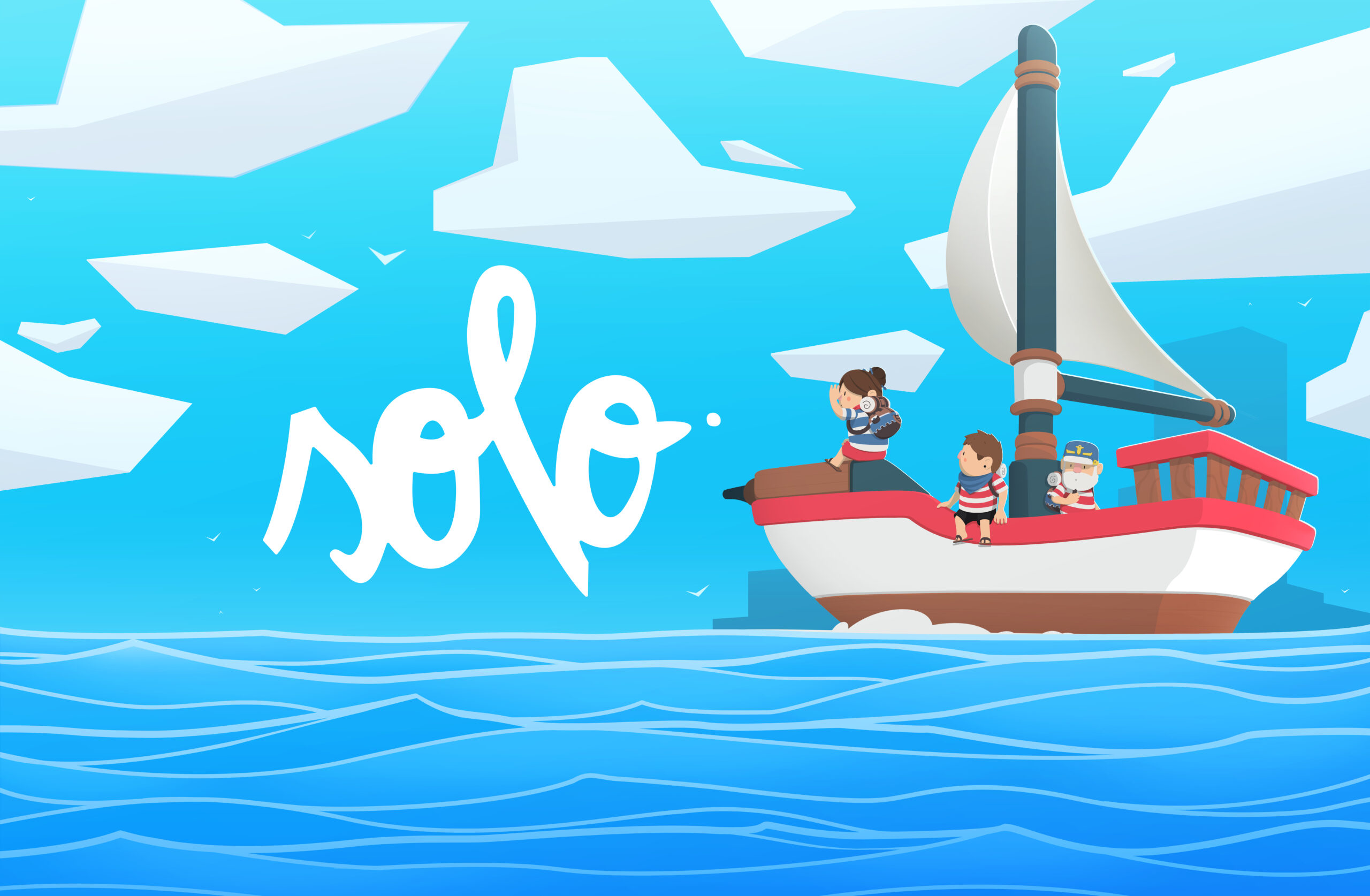[Review] Solo: Islands of the Heart – Nintendo Switch
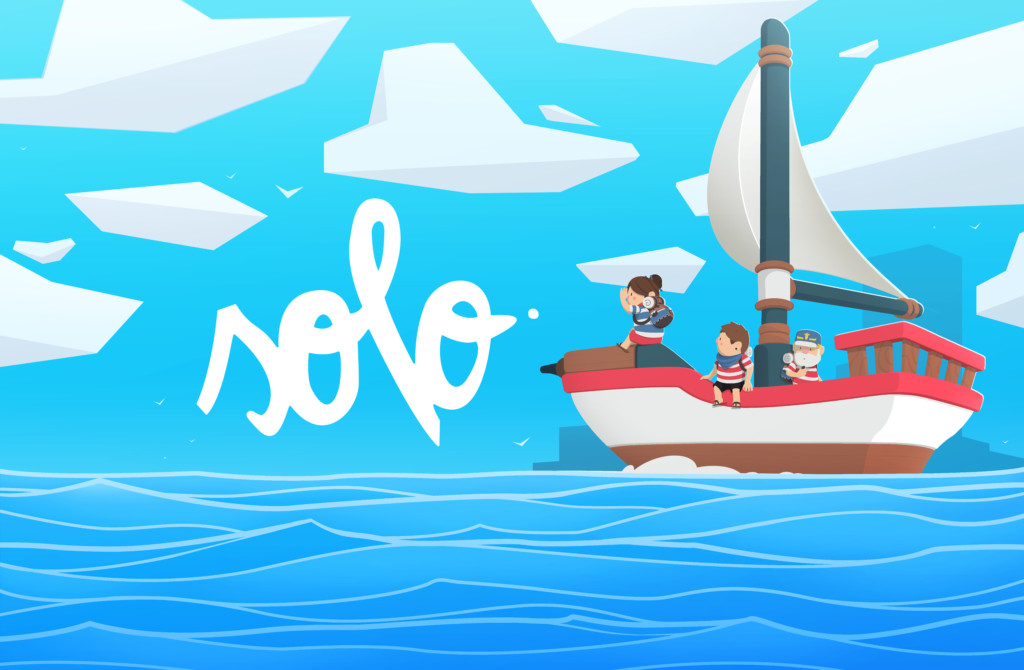
Solo: Islands of the Heart
Nintendo Switch
Developed by: Team Gotham
Published by: Merge Games
Category: Puzzle, Platformer
Release Date: August 1, 2019
Love is a vast and indescribable thing that can mean many things to many people. Often, you may not even be aware of what it means to yourself if you don’t take the time to stop and reflect on what it is you want from love, or what you put into it. Solo: Islands of the Heart aims to be a guide on that inner journey, and to place it into a real tangible place that you must explore while seeking questions, and giving answers. Some questions you may have already considered yourself, while others may not be at the forefront of your mind, depending on your own personal experiences with romantic love and how self-reflective you may be. Let’s dive in and see what the game has to offer.
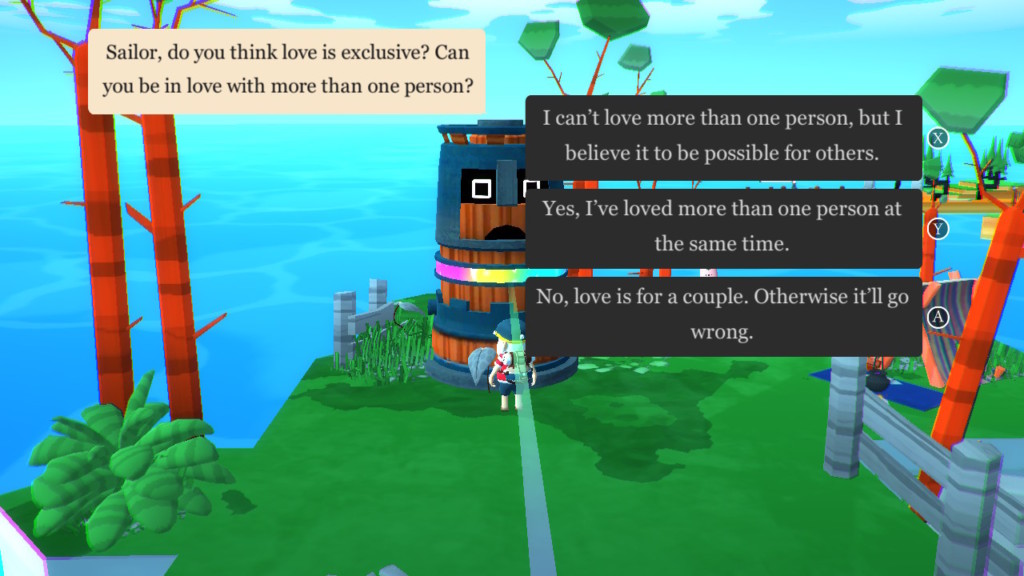
Solo: Islands of the Heart is a third-person puzzle game that takes you on a journey of self-reflection. As you explore the islands spread out before you, you will come across statues that will question you about your experiences with romantic love. The idea is that you will use your own personal experiences to answer each question, helping you come to understand yourself better. Part of this process is allowing you to do some light character creation, giving you the chance to select a gender (including non-binary) as well as the gender of who you (would like to) love, which also provides a choice of “any.” Then as you set sail on your boat named after your beloved, I used my girlfriend’s name, you will come to an island where you will receive some positive affirmations as well as be asked your first questions about the topic. As with every question in the game, you’re given three choices to choose from. Your choices here, and throughout the rest of the game, won’t impact the puzzles you receive, but it will set the course for which questions you will be asked.
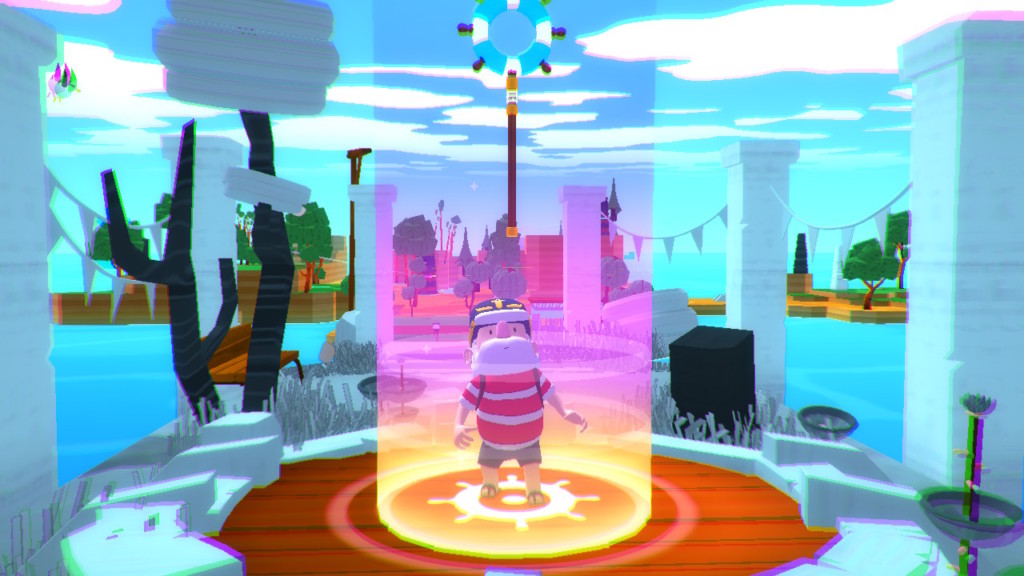
The puzzle-bits of the game were surprisingly solid, as I expected the game to focus more on the exploration and self-reflection. Instead, the player is treated to some box based traversal puzzling. Carrying around boxes, and stacking them in varying ways to find your way up to new areas allows you to send power from lighthouses to the philosophizing statues scattered throughout the archipelagos. As you start, you’ll merely lift and carry boxes from one place to another, occasionally stacking them, creating stairs and walkways. Eventually, you’ll receive a magic wand which grants the ability to pick up any box you can see. This sounds like it could easily break the game, but the game despawns items when they leave the zone they are meant to be used in. You can use the wand to place boxes in areas that you would not normally be able to reach, as well as to collect boxes that you maybe shouldn’t be able to access.
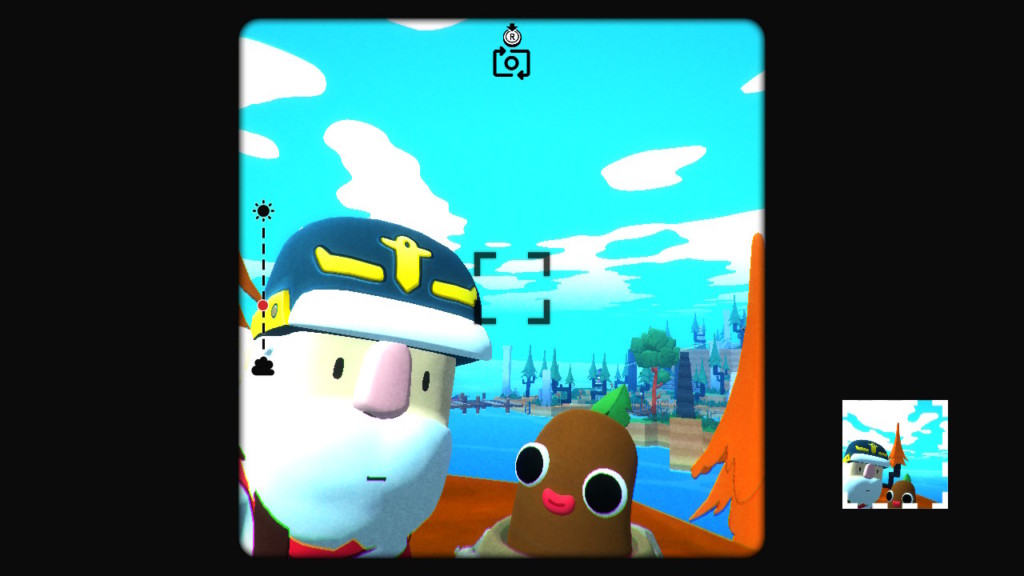
While I think the overall puzzle design is executed well enough, the experience wasn’t without a few hiccups. I encountered a few puzzles where I wasn’t sure if I had solved the puzzle the way the developers intended, or if I had just happened to find an angle where I could see a new box that I could grab with the magic wand. That was an unsatisfying way to solve the puzzle because regardless of if it was the intended way to solve it, I didn’t feel like I had earned the solution at the end of it. There are also bonus puzzles scattered throughout the world that include things like befriending and taking pictures of wildlife and creating bridges to reunite separated animal couples. But there is no real incentive to do so, as the bonus objectives don’t provide any incentive for completing them. The puzzles that require creating a bridge are a decent way to gain some extra mileage out of the game, but they don’t add anything significant.
I also encountered a few instances of the game soft locking, instances where the game would only accept camera control but nothing else. I had to exit to the Switch home screen and quit the game and reboot to make progress. One of these instances happened at the very beginning of the game! I sat in a bench at the start and was unable to stand up and move on with the game. Luckily the checkpointing works well, so if this happens to you it should not be a major setback.
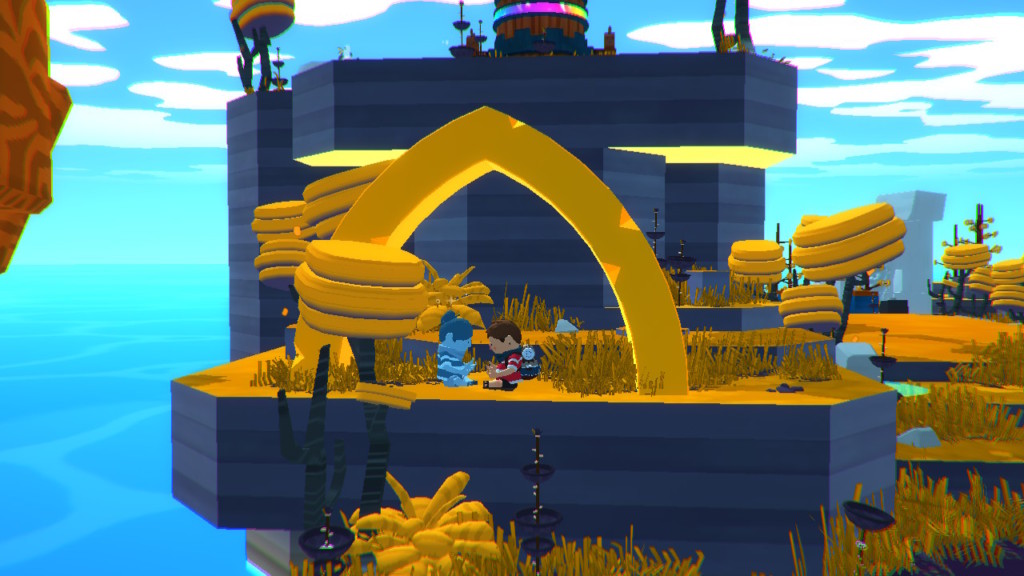
The puzzles steadily increase in difficulty and introduce new blocks and mechanics for the player to work with. One type of puzzle that I particularly enjoyed involved using blocks and a light source to cast shadows in a particular pattern. The puzzles ended up being very simplistic in their solutions, but the concept was neat and I would have liked to have seen it be more fleshed out.
The music in the game is simple, just a few notes here and there, building slowly as you progress through the game, but is nothing extraordinary. It sets a nice tone for your meandering journey and allows you to focus on the puzzles and questions without drawing your attention away.
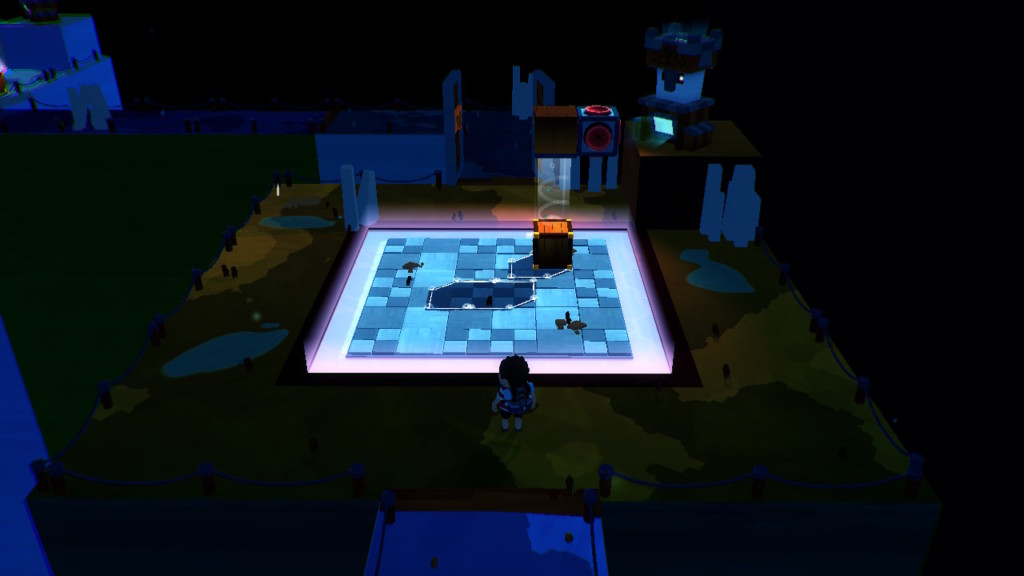
As for the journey of introspection the game takes you on, what you take out of the game is going to largely depend on how introspective you find yourself. If you’re someone who thinks about your relationships with others, then you may have already asked yourself some of these questions. If you don’t spend much time actively thinking about things like how you handle your relationships, you may learn something about yourself. Some of the questions include; “would you move overseas to be with your partner” and “in an argument between your family and your partner, who would you side with?” The answers you can provide to the questions are severely limited, as you only have three possible answers which cover the broadest possible of yes-no-maybe answers. With something as complex and nuanced as love, it would be impossible to provide ideal and nuanced answers for every question, but it felt a little restrictive when answering questions. There’s also a question about the importance of sex in love which, while important to many people, doesn’t feel meaningful in the game with the way it is addressed. But again, if you haven’t sat down and thought about these kinds of questions, you could learn something about yourself.
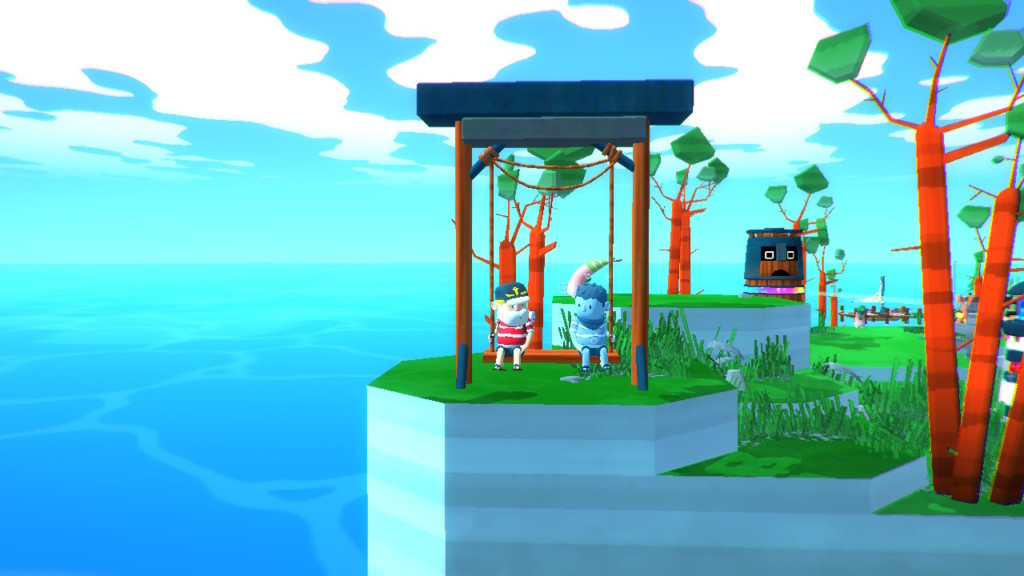
The Switch once again does a disservice to the game with its frame rate. While totally playable, the game felt like it was running at less than 30 frames per second most of the time. It is not a graphically demanding game, and I even like the visual style they go for. It is cute and colorful and easy to interpret what is happening in the world. But the natural pace you move about the world and the frame rate ended up making the game feel like a bit of a slog at times to play. The performance certainly doesn’t hinder your ability to solve puzzles, and it’s a single-player game, so its nothing to worry about, but with such a simple game it is sad to see it perform less than optimally.
In the end, I enjoyed my time with Solo: Islands of the Heart because of the evolving puzzle design, and some introspection is good every now and then, even if you do it on your own. A guided journey can give different results and take you on a different path than if you went alone. If you’re in a relationship, you could play together, or separately, and come together and talk with what you experienced and your thoughts, opening up a new dialogue in your relationship. But again, being in a relationship is not a requirement for the game, and anyone could play this game and take something away regardless of their experiences until now.







